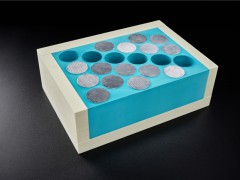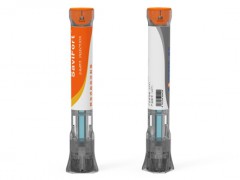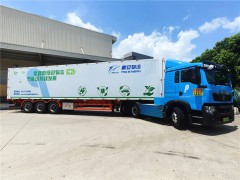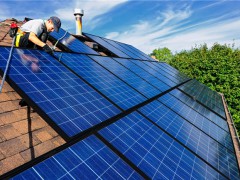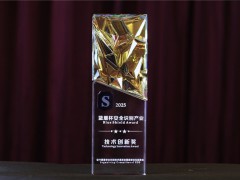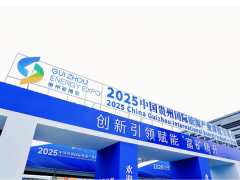???? 據3月3日offshore energy消息:荷蘭海上運輸服務提供商Future Proof Shipping已同意將其內陸船只Maas改裝為零排放氫氣推進系統。
????經過數月能源分析,這艘110米長的內陸集裝箱船將于2021年第三季度在荷蘭船廠集團位于Hardinxveld的船廠進行改裝。
????FPS公司在聲明中表示,預計到今年12月,該公司氫動力將達到100%。
????改造過程包括用氫燃料技術取代內燃機技術,移除主引擎和變速箱,并安裝新的模塊化推進系統。
????這將包括電動馬達、氫罐、PEM燃料電池系統和蓄電池系統。壓縮氫罐、燃料電池和蓄電池系統是相對獨立的,它們可以為了維護或更換而拆卸。
????氫氣和燃料電池系統將安裝在船舶的貨艙中,氫氣將被放置在兩個40英尺集裝箱中的燃料電池系統上方。
????燃料電池系統將有三倍的冗余,容量為825千瓦,一個504千瓦的鋰離子電池組用于調峰、二次和橋接電源。該系統將包含一個750伏DC母線和一個用于推進的電動馬達。
????一旦重新投入使用,Maas將在鹿特丹和安特衛普之間進行集裝箱運輸,預計每年將減少2000噸二氧化碳排放。
????該項目得到了荷蘭RVO的資助(Duurzaam Scheepvaart補貼計劃)、通過ZEM港口國家服務項目實施的區域間北海方案,以及由EICB創新中心執行的鹿特丹港可持續內陸航運激勵計劃。
????在未來五年里,FPS計劃建造并運營一支由10艘零排放內陸和近海船舶組成的船隊,并提供租賃服務。
????馮娟 摘譯自 offshore energy
????原文如下:
????Holland Shipyards bags hydrogen retrofit for FPS
????Dutch marine transportation services provider Future Proof Shipping has agreed to retrofit its inland vessel, Maas, to a zero-emissions hydrogen propulsion system.
????Following months of energy profiling, the 110-metre inland container vessel will be retrofitted at the Holland Shipyards Group’s yard in Hardinxveld throughout the third quarter of 2021.
????It is expected to be sailing 100 per cent on hydrogen power by December of this year, FPS said in its statement on Wednesday.
????The retrofit process includes the replacement of internal combustion technology with hydrogen technology, removing both the main engine and gearbox, and installing a new modular propulsion system.
????This will consist of electric motors, hydrogen tanks, a PEM fuel cell system and a battery system.
????The compressed hydrogen tanks, the fuel cells and the battery system are separate units that can be removed for maintenance or replacement purposes.
????The hydrogen and fuel cell system will be installed in the cargo space of the vessel, with the hydrogen being placed above the fuel cell system in two 40ft containers.
????The fuel cell system will be triple redundant with 825 kW capacity and a 504 kWh lithium-ion battery pack for peak shaving, secondary and bridging power. The system will contain a 750V DC bus bar and an e-motor for propulsion.
????once back in service, the Maas will carry on shipping container cargo between Rotterdam and Antwerp and is expected to reduce greenhouse gas emissions by 2000 CO2e tonnes annually.
????The project is supported by funding from the Dutch RVO (Subsidie Duurzaam Scheepvaart scheme), Interreg North Sea Program, via the ZEM Ports NS project, and a stimulation scheme for sustainable inland shipping from the Port of Rotterdam, which is executed by the Expertise en InnovatieCentrum Binnenvaart (EICB).
????Over the next five years, FPS aims to build and operate a fleet of 10 zero-emission inland and short-sea vessels which they will offer for charter.

